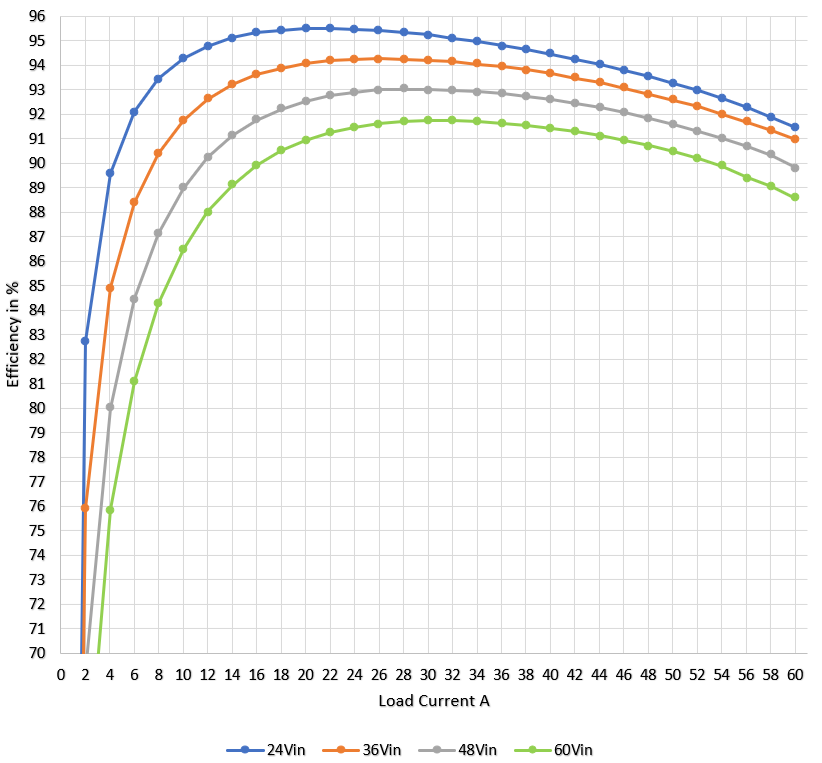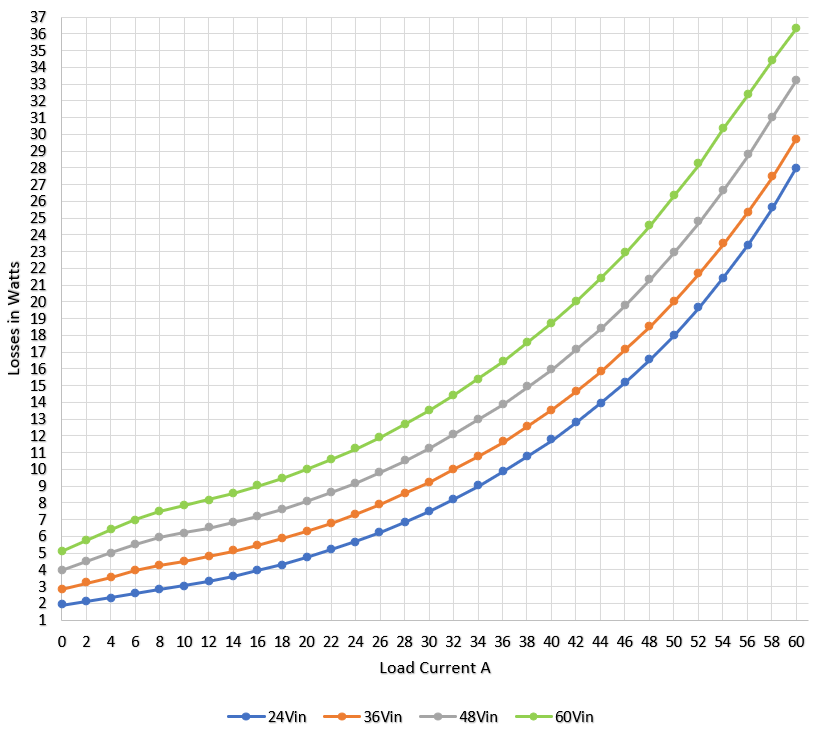TIDT352 October 2023
2.1 Efficiency Graphs
The efficiency of the system is demonstrated across an input voltage range of 24 V to 60 V.
According to Figure 3-15, when operating at full 60-A load, the efficiency is within the range of 89% to 92%.
The efficiency graph is derived from the conversion loss vs load current graph (Figure 2-2), which also spans over the same 24-V to 60-V input range. The no load loss varies from under 2 W when the input voltage is 24 V, increasing to just under 5 W when the input voltage reaches 60 V. The range of full load loss extends from 29.7 W at 36-V input to 36.4 W at 60-V input.
 Figure 2-1 5 V, 2-Phase Conversion Efficiency
Figure 2-1 5 V, 2-Phase Conversion Efficiency Figure 2-2 5 V, 2-Phase Conversion Losses
Figure 2-2 5 V, 2-Phase Conversion Losses